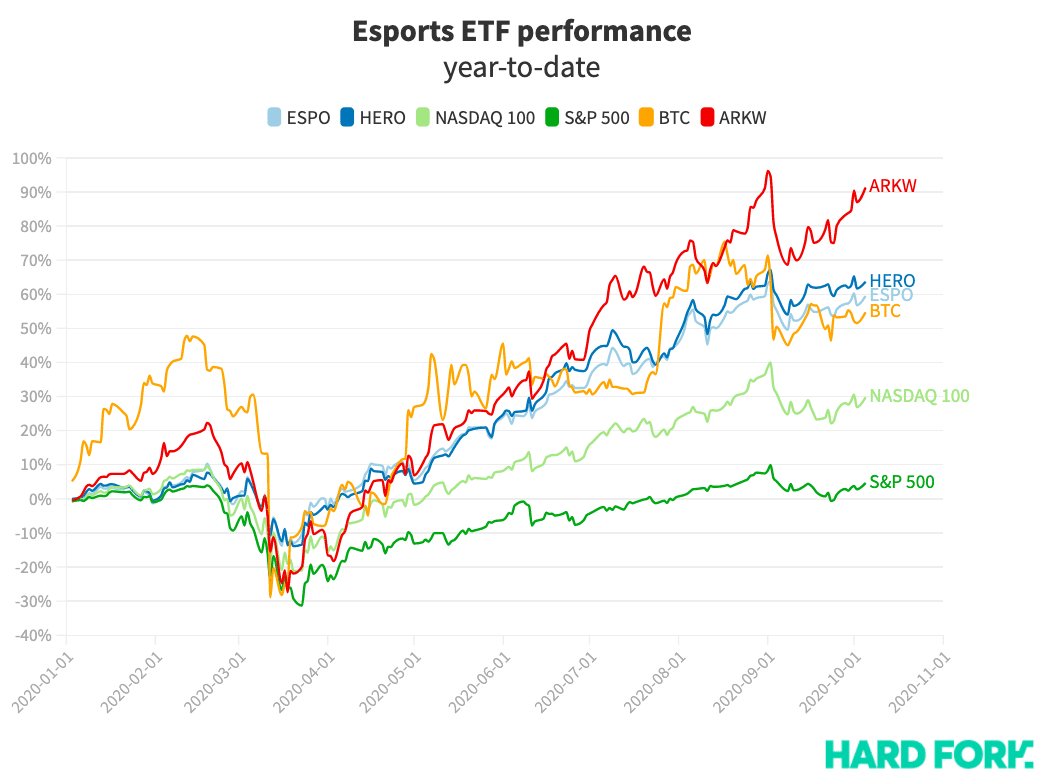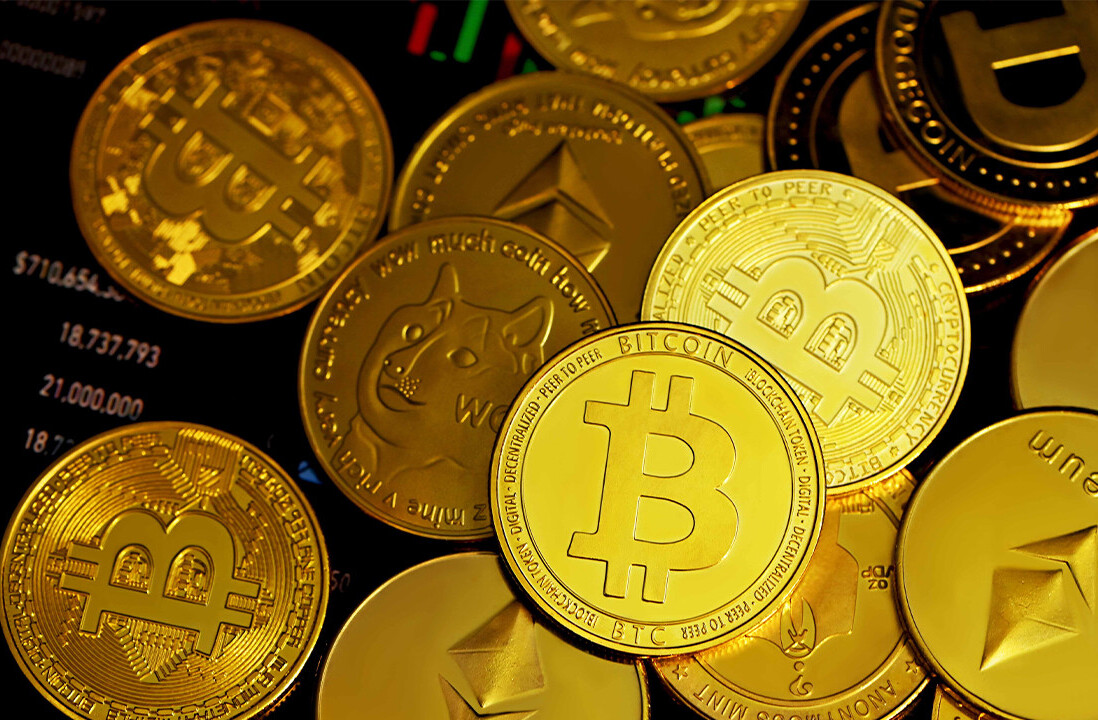
Investors seeking to capitalize on the world’s rising online presence found huge returns in esports and gaming stocks in the first three quarters of 2020.
In fact, the two most prominent ‘esports and gaming’ Exchange Traded Funds (ETFs) on the market, HERO and ESPO, are respectively up 64% and 59% this year, while the tech-heavy NASDAQ 100 index has risen just 29%.
Even Bitcoin, often pegged as a “safe haven” asset during times of global unrest, hasn’t benefitted quite so much from our new normal as esports and gaming stocks.

ETFs work just like regular stocks, except they represent investment in an underlying portfolio of stocks rather than a company.
ETFs are available for almost every industry, and while they’re not without disadvantage they do offer retail buyers a low-effort alternative to choosing a balanced portfolio themselves.
Global X’s HERO and VanEck’s ESPO are “passive” ETFs, meaning their portfolios automatically track a particular stock market index. But while the two funds have performed quite similarly and share some overlap, there are some big differences.
HERO and ESPO, same but different
The visualization below compares the portfolios side-by-side; you can select each ETF individually, or choose both to show them together.
Note, China’s gaming overlords Tencent and US chip princes AMD are currently absent from HERO, but ESPO holds around $40 million worth of stock in each company.
(If the visualization doesn’t show, try reloading this page in your browser’s “Desktop Mode.”)
Also missing from HERO is Japan’s Bandai Namco and Poland’s CD Projekt. Both game studios still feature relatively heavily in ESPO — Bandai Namco is up 20% this year while CD Projekt has gained 27%.
Instead, ESPO holds $59 million worth of shares in a raft of low- and mid-cap gaming stocks from around the world, including Ireland’s Keywords Studios, China’s Joyy, and San Diego’s Turtle Beach.
Sweden pays off big for gaming and esports ETFs
To help find which country is home to the best-performing gaming stocks, the interactive chart below splits the featured 47 stocks into their native groups, ordered by average share price returns for the year so far.
[Read: Inside the $2.5B internet fund dominating the stock market]
Gaming stocks hailing from South Korea, China, and the US have done particularly well on average this year, but a pair of Swedish picks have proven the most profitable.
Stillfront, which specializes in free-to-play strategy games, has seen its share price skyrocket by 204%, while THQ Nordic parent Embracer Group has gained 136%.
On the lower end of the scale is Japan. Aside from Capcom’s 98% return year-to-date, the nine other Japanese gaming stocks found in ESPO or HERO haven’t performed all that spectacularly.
None of this is investment advice. Don’t pretend it is, because it’s not. Always do your own research.
Get the TNW newsletter
Get the most important tech news in your inbox each week.





